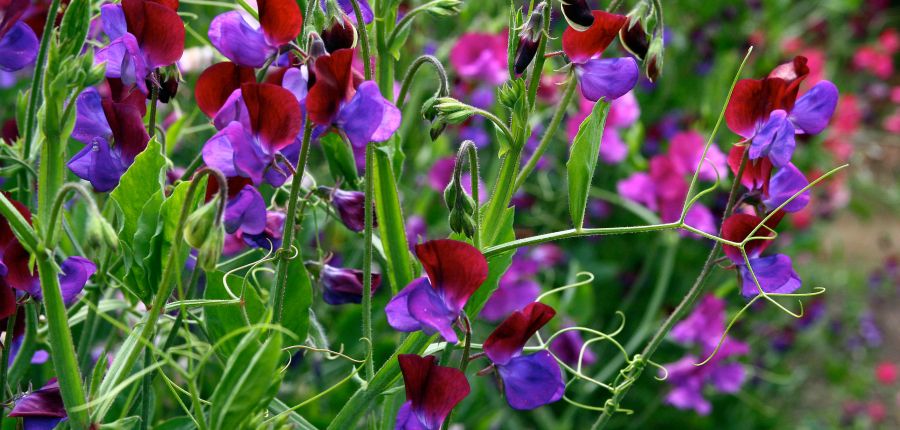The joy of Sweet Peas
Posted By: rocket veg Category: Plant Care, Seasonal AdviceSweet Peas: quintessential cottage garden flowers and a favourite with allotment gardeners, these wonderful flowers reward us with their myriad of colours and dainty petals, but chiefly with their heavenly scent! Sweet Peas are easy to grow from seed, to be planted out in late spring when the risk of frost has passed. With good soil, regular watering and some kind of supportive structure to climb, the humble little plants will soon reward you with a stunning show of flowers, brightening a dull corner or as the centrepiece in a bed or border.
Sowing Sweet Pea seed
For best results and a long flowering season, sow the seed during winter months so that the plants are ready to go into the ground at the earliest opportunity. I used to sow Sweet Pea seed in November but found that the developing plants became leggy unless kept in a very cool spot – my cold frame, the perfect place until mice discovered the young plants and had a mid-winter feast! This year, I sowed the seed in January which worked better, the sturdy little plants ready to go into the ground in late-April.
Sweet Pea seeds are like tiny cannonballs and just as hard. Some gardeners recommend nicking the seed with a sharp knife to encourage germination but popping the seed into a plastic box lined with damp kitchen roll and putting it in warm place for a day or two seems to work just as well and should encourage most of the seeds to germinate. Once the seeds have swelled and begun to shoot, sow in good seed compost.
The importance of encouraging strong roots
Sweet Peas produce long roots in order to take up moisture and nutrients from the soil so it is important to encourage the development of a strong root system as the plants grow. You can, of course, buy special root trainers, designed to do just that, but cardboard toilet roll tubes work just as well and I find are far less fiddly to fill when it comes to filling with compost. I then stand a dozen or so tubes in a half size seed tray and cover with a small piece of fleece to retain warmth and moisture. As each seedling grows, so do its roots, to the point where they begin to show from the base of the tube, a sure sign that you have strong and healthy plants. At this point, pinch out the tip of each plant above a pair of leaves to encourage side shoots to develop.
Planting out and support
If you haven’t grown your Sweet Peas from seed, why not buy a tray of young plants ready to go in the ground. Plant them a few inches apart in humus-rich soil. They like a sunny spot, but gentle shade is fine.
Sweet Peas are proficient climbers and use their long tendrils to cling to any suitable support, such as plastic pea mesh with the big square holes, canes, trellis etc. I use eight long canes to create a tepee, then wind long, thin willow twigs around, weaving them together as I go, which not only strengthens the whole structure, but also provides the perfect grip for the tendrils as the plants develop.
The secret of continuous flowering
From the moment they begin to flower, sweet peas are determined to produce seed in the form of hairy green pods, but once this happens, the plants will stop flowering. To prolong the flowering period, Sweet Peas must be picked on a very regular basis, the best flowers taken for display, any faded blooms and seed heads discarded. Make sure that the soil is kept moist during dry spells, another tip to prolong flowering.
Which varieties to choose
There are dozens of different types of Sweet Pea and devotees have their favourites based on the shape of the flowers and petals and above all – scent! To grow the sweetest-smelling plants, look on the seed packet for words such as ‘Fragrant blooms’. For flowers with extra-long stems, choose varieties described as ‘Show bench quality’ or ‘Recommended for exhibition’. If you grow Sweet Peas, I hope you get as much pleasure from yours as I will from mine.







